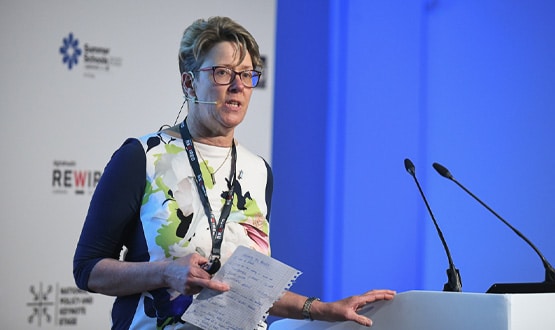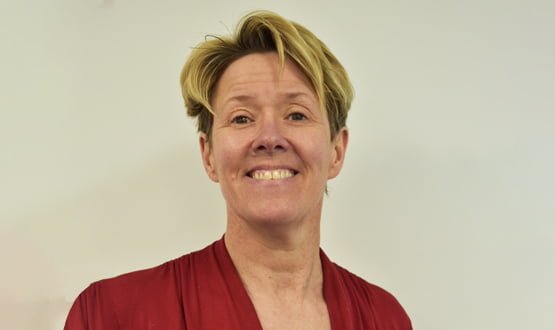Interview: Beverley Bryant
- 12 August 2015

General elections generally mean turmoil for the NHS. For at least the past two decades, if the party of government has been returned to power, the health secretary has changed – and with them health service priorities for ‘reform.’
This year has been a bit different. NHS England’s chief executive, Simon Stevens, got his plans for closing the NHS’ £30 billion funding gap in early, and more or less persuaded all the major parties to sign up for them.
‘Vanguard’ sites to test out new models for funding and organising more joined up health and social care were in place before the election; and already talking about the need for better data and joined up records to support their plans.
Admittedly, the ‘winter crisis’ – or the Treasury’s imperative to find additional money to keep A&E relatively quiet before voting – led to the near-cancellation of the second of the two tech funds that were supposed to pay for some of the NHS’ ‘paperless’ ambitions.
But then the general election returned the Conservatives to power and health secretary Jeremy Hunt, the originator of the ‘paperless by 2018’ target, to Richmond House. For Beverley Bryant who is, as NHS England’s director of digital technology, one of the key figures trying to deliver on those digital ambitions, this was welcome.
“Usually, when you get a new government in, they have different priorities [to the previous administration] and a different emphasis,” she says. “So it’s really reassuring to have the support and the prioritisation that the secretary of state has put on this agenda carrying on.”
Show me the money
Bryant is well aware, though, that she, her team, and NHS organisations will get nowhere without the cash to support their work. “What is stifling ambition in some areas is that, once they have the plans and capabilities, they don’t have the affordability,” she says. “We believe that to make this transformational change requires investment.”
In June, Chancellor George Osborne announced in his ‘emergency budget’ that there would be a new government spending review, reporting on 25 November. While the focus will be on cuts to non-protected departments, the Treasury will be scrutinising other major projects and spending allocations.
This makes it critical, in Bryant’s view, for the NHS to make the case for spending on IT. However, she says it is not just up to the centre; even if more funds are secured, there will always be an element of matched funding for IT programmes that will have to come from trusts and, increasingly, their partners.
“We need boards to spend their own money, to find and make the cases,” she says. She’s also determined to make sure any money that is secured is spent; acknowledging that the loss of all but £43 million of what was supposed to be a £240 million 'Integrated Digital Technology Fund' in March hit faith in the latest push on NHS IT.
“I never want to be in a position again where we announce that money will be available and then it doesn’t actually transpire,” she says. “So we will be considering that.”
Joining up the NHS
As for what Bryant wants spending review money to support, she highlights the two broad priority areas of the ‘Five Year Forward View’: joining up NHS and social care providers and evolving the ‘prevention agenda’ by developing digital tools for the public.
The first area includes “finishing the job” that previous, failed national IT strategies have tried to achieve and get technology into NHS organisations that can allow them "to operate in a modern way."
“That’s the electronic patient record. That’s interoperability and alignment so patients only have to give their information once and clinicians can get access to information about the patient at the touch of a button.”
The plan is for the centre, through the National Information Board chaired by Tim Kelsey, NHS England’s director of patients and information, to support local NHS health and care economies on this journey by developing local digital roadmaps.
These will detail each region’s plan to make sure that by 2020 all patient and care records will be digital, real-time and interoperable – the revised target for ‘paperless’ working set out in the ‘Personalised Health and Care 2020’ IT framework that followed the 5YFV.
NHS England is due to publish guidance on how organisations can develop these roadmaps at the NHS Innovation Expo this September, while the actual roadmaps are due to be published by April next year.
What’s happening, where?
The roadmaps will also give NHS England a better idea of what a “totally variable” healthcare IT economy actually looks like, says Bryant. “We have people right at the top end not even interested in us. They have been doing it and working with local technology providers. And then we have got [every step below that] all the way down to people doing nothing.
“What the local digital roadmaps will hopefully give us is a real picture of what that level of variability is at a detailed level.” Bryant is encouraged by what she sees as growing enthusiasm from both providers and suppliers for this process.
She feels that the historically “competitive nature of the provider landscape” is changing, and trusts are more willing to adopt or use or share each other’s’ technologies. “We just can’t afford it. People don’t have the time, energy, money, or skills to keep going it alone.”
Meanwhile, she welcomes the recently published ‘interoperability charter’ put out by trade body Tech UK, whose signatories have committed to making sure that there are no financial or technical obstacles to their systems working together to support integrated care.
“I would encourage NHS organisations, when they are developing their digital roadmaps, to look at which suppliers have signed up to the interoperability charter, so they can buy from those suppliers,” she says.
A new digital front door
Bryant’s other priority for the spending review is the public facing side of NHS England, and focuses on how patients interact digitally with the NHS in a variety of ways. “There is a plethora of services we know our public want,” says Bryant, mentioning the likes of online NHS 111, access to medical records, appointment booking and ordering repeat prescriptions.
“But from a technical perspective all those services are sitting on different assets: some are local, some are national, some are NHS England, some are Health and Social Care Information Centre, and so on.”
The goal is to bring them together under one brand in NHS.uk, which NHS England is working to evolve from being the home of the NHS Choices’ platform for health information to a “trusted front door” for citizens to access NHS services.
As an example, she mentions the European Health Insurance Card, which allows anyone who is insured by or covered by the statutory social security scheme of an EEA country to receive medical treatment.
The card is free for UK citizens, but some people can end up paying £50 if they search online and find a private company offering the service, says Bryant. By bringing EHIC registration onto the NHS.uk platform, citizens will have access to the service on a site they trust in a way that is easy to understand. “People can trust it, and we can all get an EHIC without paying £50.”
Bryant says the team has set a date of 2018 for the new NHS.uk to feel “fully functioning”, while they will be “dripping through functionality and services on a gradual basis” from now on.
Work is already progressing on an online version of NHS 111 and there are plans to launch a library of medical apps on NHS.uk that have been clinically and technically assessed by April next year.
Bryant is aware that the use of apps and other digital tools won’t be everyone’s idea of healthcare. “I think people get frightened if they think we’re trying to push everyone down this route. The reality is some people won’t do it, and some people won’t need to do it. But people with long term conditions who increasingly have a condition that affects their everyday lifestyle; we think this can become a way.”
Building relationships
As the digital agenda marches on, the relationship between what ‘the centre’ is doing and what local providers are doing is crucial. “We’ve worked really hard to build relationships, because in the past [they weren’t there],” she says. “There’s a sense that we are getting something of that right; and when we are not getting that right people are telling us.
“That’s a good thing; it shows the relationship is strong enough for them to feel they can be open about it.” For Bryant, the priorities for the centre are clear: “We are here to incentivise, promote, gather evidence, show case studies, and show people how to do it.” After that, it’s for local organisations to develop something that works for their community.
“Ultimately, we think patients and public are going to start to demand this from the NHS. The more we can get local organisations equipped, understanding it, and offering it the better.”
If that message isn’t strong enough, and the ambition to finally get electronic patient records in place, to have interoperable systems, and to share information with clinicians and patients remain ambitions, Bryant says: “We will have missed a huge trick.”
“It will be perpetually frustrating both our clinicians and our patients, who have to constantly repeat information as they move from care setting to care setting,” she says.
Worse, the NHS will continue to rely on paper and fax machines. Bryant has become well known for her planned “bonfire of the faxes” – something she is hoping to plan for 2020. “5 November might be good,” she laughs. “Maybe we can have it at EHI Live that year!”

|



